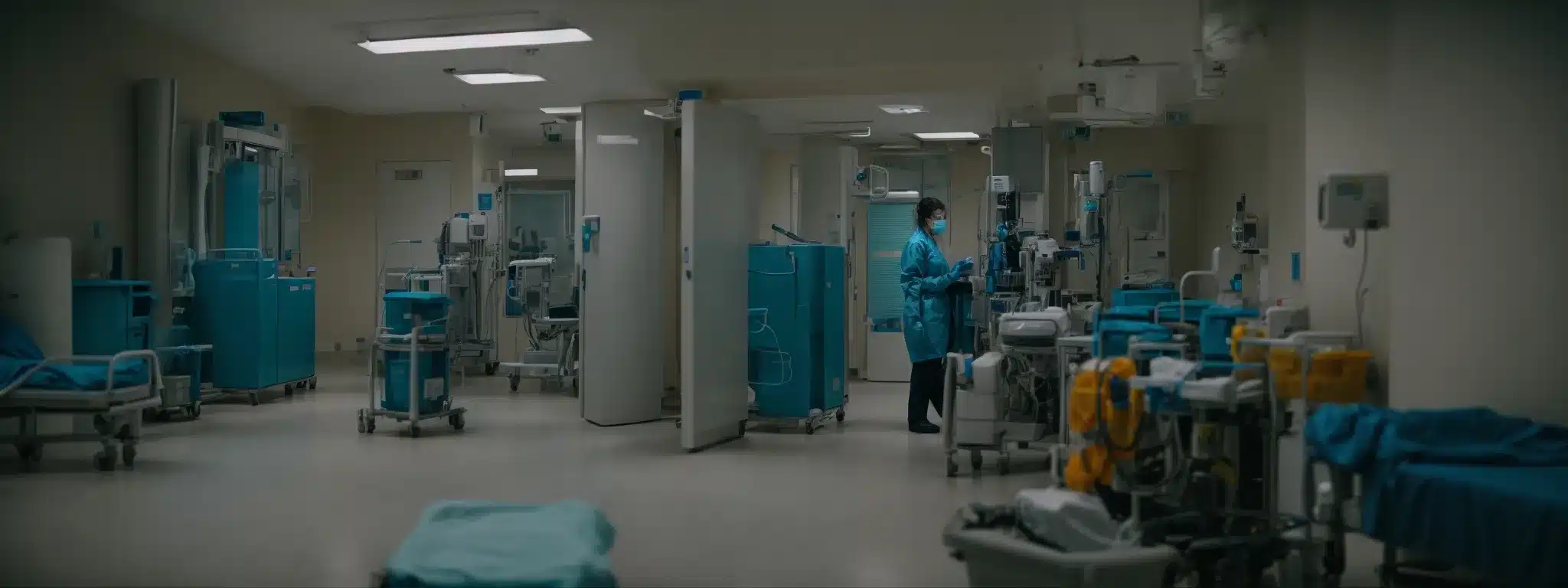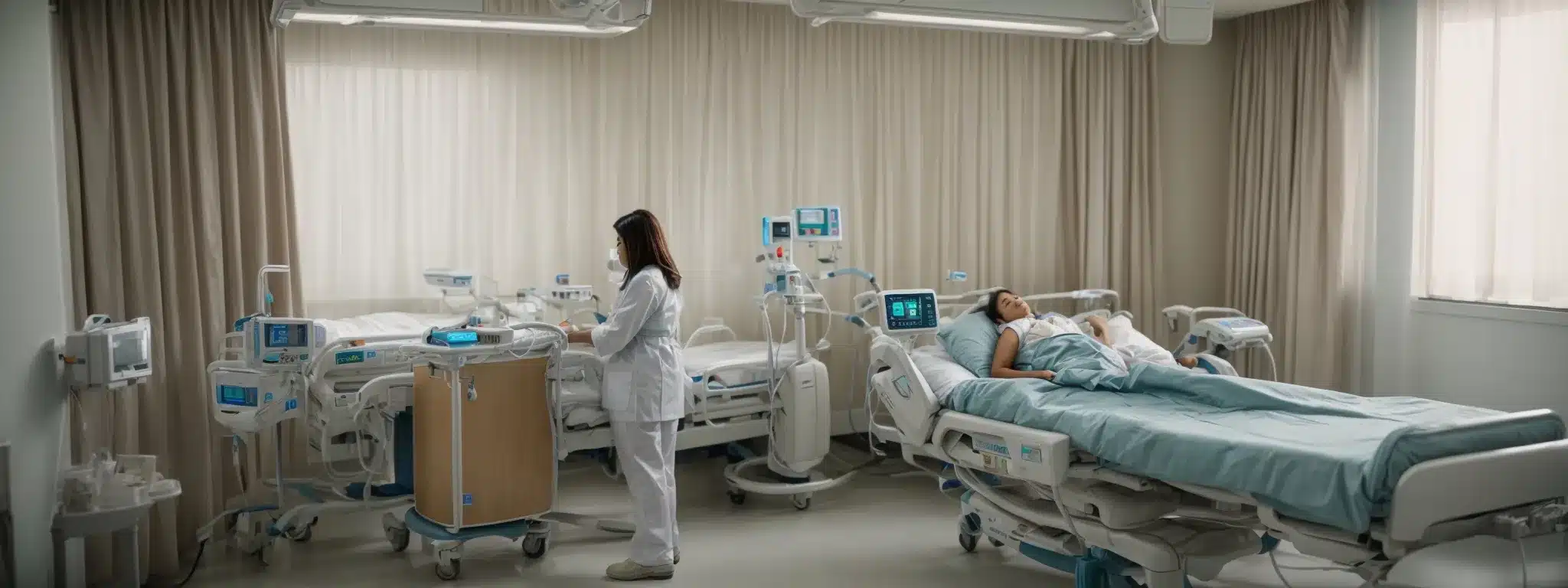Effective Measures to Shield Healthcare Employees From Occupational Illnesses
In healthcare settings, staffers are the backbone, providing essential care, but facing risks that can lead to health problems and even occupational diseases.
From the busy nurses association halls to the outdoor workers managing hospital grounds, it’s vital for every individual to work in an environment that prioritizes their well-being.
This can be achieved through protocols that not only enforce workplace safety but also address the mental and physical toll of healthcare work.
By integrating strategies like infection control, immunization, ergonomic adjustments, and mental health support, organizations can bolster their defense against workplace hazards.
Keep reading to discover how these focused measures can protect those who dedicate their lives to healing others.
Key Takeaways
- Healthcare Organizations Prioritize Safety by Updating Infection Control Guidelines and Training Staff
- Regular Health Screenings and Proper Equipment Help Prevent Occupational Diseases Among Healthcare Workers
- Mental Health Support Systems Are Essential for the Resilience of Healthcare Staff in High-Stress Roles
- Creating a Safety-Oriented Culture Involves Open Communication, Recognition, and Regular Safety Audits
- Health Screenings and Assessments Are Key to Early Detection and Management of Health Issues in Healthcare Settings
Implementing Robust Infection Control Protocols

In the pursuit of workplace safety, especially within healthcare settings, a steadfast commitment to infection control remains paramount.
Healthcare organizations are tasked with the responsibility of not only shielding their staff, nurses, and other health workers from occupational diseases but also ensuring the well-being of patients and visitors.
This begins with the regular updating of infection control guidelines to reflect the latest research and evolving pathogens.
Additionally, healthcare employees must receive enhanced training, equipping them with the knowledge and skills to tackle new health problems effectively.
Furthermore, ensuring these dedicated individuals have access to adequate personal protective equipment is vital to maintaining both mental and physical resilience in the face of potential workplace violence and illness.
Together, these elements form a protective barrier, promoting recovery, and reducing stress levels across the workforce.
Regular Updating of Infection Control Guidelines
In the dynamic world of health care, infection control guidelines serve as a vital shield safeguarding employees and those they care for. Organizations frequently review these guidelines, bringing them in line with new findings and recommendations from reputable sources such as the World Health Organization and the Centers for Disease Control and Prevention.
To ensure consistency and thoroughness in their approach, health care providers engage in ongoing consultations with experts and frontline workers. This ensures the selection criteria for safety measures are both practical and scientifically sound, keeping the health and safety of both workers and patients at the forefront of healthcare delivery.
Enhanced Training for Healthcare Workers
The safeguarding of healthcare staff against occupational hazards hinges on comprehensive training programs. These initiatives sharpen the prowess of healthcare workers, allowing them to better identify infection risks and execute evidence-based protocols proficiently.
By prioritizing advanced training, healthcare organizations help employees develop resilience against the myriad of stressors that accompany their noble profession. Moreover, well-trained health workers become more adept at managing workplace safety and are better equipped to prevent the spread of infections.
- Review and adapt infection control guidelines
- Consult with occupational health services
- Equip staff with essential safety gear
- Conduct regular workplace inspections
- Incorporate feedback from nurses and support staff
Access to Adequate Personal Protective Equipment
Ensuring healthcare workers have proper personal protective equipment (PPE) is a critical component of workplace safety. High-quality PPE acts as a formidable defense against the transmission of diseases, protecting not just the employees but also the patients they serve.
Regular assessments of the PPE needs within healthcare settings help organizations stay prepared for various health threats. By allocating the suitable types and quantities of protective gear, healthcare administrators demonstrate their commitment to the staff’s health and safety standards.
Establishing Comprehensive Immunization Programs

Combatting health problems on the front lines, healthcare employees face a slew of occupational risks, with exposure to infectious diseases being among the most prevalent.
Comprehensive immunization programs are essential in mitigating these risks, acting as a critical line of defense in occupational health service.
By offering on-site vaccination services, diligently maintaining immunization records, and championing the significance of annual flu shots along with other relevant vaccines, healthcare settings can foster a safer environment.
Such initiatives not only protect healthcare workers but also play a part in securing the broader public health landscape.
Offering on-Site Vaccination Services
On-site vaccination services provide a convenient way for healthcare workers to stay up-to-date with necessary immunizations: By enabling nurses, doctors, and support staff to access vaccinations where they work, healthcare organizations streamline the process, ensuring high participation rates and optimal coverage.
| Vaccine Type | Targeted Diseases | Recommended for Healthcare Employee | Administration Period |
|---|---|---|---|
| Influenza | Seasonal Flu | Yes | Annually |
| Hepatitis B | Hepatitis B Virus | Yes | 3-dose series |
| MMR | Measles, Mumps, Rubella | Yes | As needed based on immunity |
| Varicella | Chickenpox | Yes | 2-dose series |
The accessibility of these services significantly enhances the compliance rates among employees, which is vital for maintaining a resistant health worker community: A community less vulnerable to common and preventable diseases not only benefits individuals within the healthcare sector but also sets a standard of health and safety in the workplace.
Maintaining Immunization Records
Maintaining immunization records is a critical task for healthcare establishments, ensuring every healthcare worker’s vaccine history is accurately tracked and readily available. This meticulous record-keeping supports the management in identifying immunization gaps and upholding regulatory compliance.
Records serve as a tangible testament to the organization’s dedication to employee well-being and a necessary tool for public health surveillance. They also facilitate prompt responses during potential outbreaks and protect both employees and patients by verifying immune status:
| Employee Name | Vaccine Type | Date Administered | Booster Due Date |
|---|---|---|---|
| Jane Doe | Influenza | 10/02/2023 | N/A |
| John Smith | Hepatitis B | Series Started 01/15/2023 | Series Completion Date: Pending |
| Sarah Wang | MMR | 08/07/2022 | Check Immunity: 08/07/2023 |
| Luke Rodriguez | Varicella | Dose 1: 03/12/2023, Dose 2: 04/09/2023 | Confirm Immunity: 05/09/2023 |
Encouraging Annual Flu Shots and Other Relevant Vaccines
Healthcare institutions play a crucial role in upholding community health by advocating for the regular inoculation against influenza and other relevant diseases. By hosting awareness campaigns and highlighting the benefits of vaccines, these organizations encourage a culture of preventive care that extends beyond the healthcare setting.
Persistent reminders and educational sessions about the availability and importance of annual flu shots and other vaccines ensure healthcare workers are well-protected. This proactive strategy contributes to a robust defense against potential outbreaks, safeguarding the health of employees and as a consequence, their patients.
Integrating Mental Health Support Systems

In healthcare environments where the demands on mental fortitude are as intense as the physical strains, the integration of solid mental health support systems is no longer optional but a necessity.
Organizations are recognizing the critical role that mental health plays in overall occupational health service, and thus are taking proactive steps to provide their staff with comprehensive support measures.
This not only includes granting access to quality counseling services but also the introduction of stress management workshops and the formation of peer support networks.
These initiatives pave the way for a more resilient healthcare workforce, equipped to address the challenges of their high-pressure roles while safeguarding their well-being.
Providing Access to Counseling Services
Healthcare settings have begun to recognize the importance of offering counseling services as part of their occupational health service. By granting easy access to mental health care providers, they ensure that employees can seek timely support for stress symptoms and other psychological concerns.
The provision of such services helps to lower the overall stress level among healthcare workers, enabling them to maintain their focus on providing excellent patient care. These counseling offerings are foundational to the recovery and long-term well-being of staff within high-stress medical roles:
| Support Service | Description | Benefit to Worker |
|---|---|---|
| Individual Therapy | One-on-one counseling sessions with a licensed therapist. | Personalized attention and tailored coping strategies. |
| Group Therapy | Facilitated sessions with peers sharing similar challenges. | Community support and shared problem-solving. |
| Crisis Hotline | 24/7 access to emergency psychological support. | Immediate assistance during acute mental health crises. |
Moreover, these counseling services are often joined by initiatives such as stress management workshops and the formation of peer support networks. These comprehensive mental health programs are a testament to the organization’s dedication to safeguarding the health and wellness of its workforce.
Implementing Stress Management Workshops
Recognizing the high-stress nature of healthcare jobs, administrators have begun to offer stress management workshops aimed at equipping their teams with effective coping mechanisms. These specialized sessions provide health workers with tools to recognize and manage stress symptoms, fostering a healthier, more balanced workplace.
The workshops, often led by seasoned experts in behavioral health, cover a variety of techniques including cognitive behavioral therapy (CBT) and relaxation strategies. Healthcare employees emerge from these sessions with an enhanced ability to navigate the emotional complexities of their roles, ultimately driving a decrease in burnout rates.
Setting Up Peer Support Networks
In the heart of every healthcare institution lies the power of unity; peer support networks epitomize this strength. These networks serve as a safe harbor for healthcare employees, where experiences are shared, and collective wisdom flourishes.
Structured around the needs of healthcare workers, peer support groups encourage open dialogue and camaraderie, reinforcing a culture where seeking help is normalized and supported: This support culture manifests in various critical ways:
- Establishing regular meetings to discuss workplace pressures and successes
- Creating a platform for healthcare workers to share personal experiences and solutions
- Building a confidential environment for staff to express concerns without judgment
- Offering guidance from more experienced colleagues to navigate the complexities of patient care
- Facilitating peer-led initiatives and support systems during times of high stress or crisis
Through the creation of these vital networks, healthcare workers find a sense of belonging and mutual understanding, which proves essential in mitigating feelings of isolation and stress within the workplace.
Fostering Ergonomics and Safe Patient Handling

Ensuring the safety of healthcare workers extends into the very movements they perform day-to-day.
A crucial component of occupational health service in any medical setting is the integration of ergonomics and patient handling that prioritizes both the worker’s and the patient’s well-being.
Musicality in patient care is achieved when staff are trained in proper lifting techniques, which minimizes the risk of injury and health problems related to physical strain.
This dedication to health and safety is further enhanced when healthcare organizations invest in assistive equipment designed to aid workers, thereby lowering instances of musculoskeletal disorders.
Additionally, a periodic review of patient handling procedures maintains a current and safe approach to care, adapting to the latest best practices and technological advancements.
Together, these measures create an environment where healthcare workers can perform their essential duties effectively and with confidence in their safety and health.
Training on Proper Lifting Techniques
Implementing training sessions on proper lifting techniques is a strategic move to protect healthcare employees from physical strain and injuries. Healthcare organizations incorporate these sessions to instruct health workers on the most effective ways to maneuver patients, thereby lowering the chances of musculoskeletal disorders.
These training modules often involve hands-on demonstrations and the use of equipment, ensuring nurses and other healthcare staff can apply the safest and most efficient lifting methods in their day-to-day activities. This not only enhances workplace safety but also supports the staff’s ability to provide high-quality patient care without risking their own health.
Investment in Assistive Equipment
Investing in assistive equipment is a key strategy for ensuring the safety and efficiency of healthcare staff. The right tools, such as adjustable beds, lift systems, and transfer devices, can significantly reduce the physical stress on workers as they care for patients.
These investments are vital in mitigating injury risks and facilitating the ease of patient handling: a win-win for both healthcare employees and those they serve. By providing this equipment, organizations underline their commitment to health and safety, allowing caregivers to perform their tasks with additional security and support.
- Adjustable beds to accommodate patient and worker needs
- Lift systems to assist with patient transfers
- Transfer devices that promote safe patient handling
- Equipment training to ensure proper usage
- Regular maintenance checks to keep assistive tools in top condition
Periodic Review of Patient Handling Procedures
Consistent evaluation of patient handling methods is a critical safeguard in any healthcare environment. It guarantees that staff follow the most current and efficient procedures, actively preventing health problems like back injuries or muscle strains.
With technology and best practices continually evolving, healthcare institutions engage in routine assessments of patient handling protocols. This practice ensures that employee techniques stay aligned with new advancements, fostering a culture of continuous improvement and safety:
- Assessment of current patient handling policies and techniques
- Introduction of updated best practice procedures
- Implementation of new equipment or assistive devices
Moreover, such reviews afford healthcare administrations the opportunity to refresh training programs. This can significantly boost the competence and confidence of workers as they apply safe patient handling practices to protect themselves and those in their care.
Promoting a Culture of Safety in the Workplace

In the realm of healthcare, fostering an environment where safety is not only practiced but also ingrained in the culture is critical for the protection of employees from occupational illnesses.
A robust safety culture is one where communication channels remain open, allowing for the free exchange of safety concerns without fear.
It celebrates adherence to safe practices, reinforcing positive behavior, and sets a precedent for consistently auditing and refining safety protocols through drills and reviews.
These concerted efforts ensure that the commitment to safeguarding the well-being of healthcare staff remains a shared priority, showcasing an organization’s dedication to excellence in occupational health service.
Encouraging Open Communication About Safety Concerns
Within the bustling corridors of healthcare facilities, championing the principle of open communication about safety concerns stands paramount. The ability to speak freely about potential hazards empowers health workers to voice issues without hesitation, thereby enhancing the protective measures within their workplace.
A productive dialogue on safety begins with trust and transparency between healthcare staff and administrators: essential features of a robust safety-oriented culture. Staff members who feel heard are pivotal in establishing effective prevention and response strategies for workplace safety challenges.
- Cultivating an environment where employees can report concerns without fear of repercussion.
- Implementing confidential reporting systems to ensure all voices are captured.
- Organizing regular safety meetings, providing a platform for open discussion and proactive solution finding.
Recognizing and Rewarding Safe Practices
To cultivate a persistent commitment to safety, healthcare environments actively celebrate those who consistently uphold and advocate for safe practices. By instituting recognition programs and incentives, organizations acknowledge the efforts of staff members, which in turn boosts morale and encourages a widespread adoption of safety actions among all employees.
In the spirit of fostering a culture of safety, healthcare administrators often spotlight achievements in safety protocol adherence during staff gatherings or via internal newsletters, amplifying the message that safety is both valued and rewarded. This public acknowledgment serves as a motivational force, building a strong community focus on maintaining a secure and healthy workplace for all.
Conducting Regular Safety Audits and Drills
Conducting regular safety audits and drills serves as a crucial barometer for gauging the effectiveness of safety protocols within healthcare facilities. These structured evaluations allow organizations to identify areas needing improvement and affirm the measures currently safeguarding staff and patients:
| Audit/Drill Type | Frequency | Primary Focus | Outcome Aim |
|---|---|---|---|
| Fire Safety Drill | Quarterly | Evacuation Procedures | Minimizing Response Time |
| Infection Control Audit | Biannually | Sterilization Practices | Reducing Infection Rates |
| Patient Handling Drill | Biannually | Proper Technique | Decreasing Worker Injury |
| Equipment Usage Audit | Annually | Functional Integrity | Ensuring Reliable Operations |
Moreover, the drills provide hands-on experience, increasing staff proficiency in emergency responses and reinforcing their readiness to act swiftly and effectively during actual crises. Regularly scheduled audits, coupled with realistic simulations, build a foundation of preparedness for healthcare employees, fortifying the institution’s commitment to maintaining a secure environment.
Strengthening Occupational Health Surveillance

In healthcare facilities, where the risk of workplace illnesses looms, occupational health surveillance acts as an essential safeguard.
Key to this protective stance are regular health screenings and assessments, vigilant tracking, and analysis of occupational illnesses, complemented by a protocol for swift reporting and diligent follow-up on any arising health issues.
These strategic efforts are crucial in capturing early signs of work-related health complications, aiding in rapid intervention, and crafting an informed response to maintain the health of those entrusted with the care of others.
This proactive approach ensures that healthcare workers are supported not just in response to health problems, but in their ongoing prevention.
Regular Health Screenings and Assessments
In healthcare settings where the risk of exposure to various health threats is a daily reality, regular health screenings and assessments for employees are vital measures of prevention. These assessments help identify any early indications of occupational diseases, ensuring swift intervention and proper care are provided.
Frequent and thorough health evaluations keep the track of workers’ well-being, guiding interventions to minimize the onset of work-related health issues. Tailored health screenings align with the specific risks associated with different healthcare roles, from direct patient care to laboratory work:
- Conducting annual physical exams to assess overall health.
- Providing respiratory evaluations for workers exposed to respirable hazards.
- Screening for signs of stress or burnout among staff frequently encountering workplace stressors.
- Offering audiometric testing for employees in high-noise departments.
- Performing skin checks for healthcare professionals handling potential skin irritants.
Such screenings are crucial in detecting potential health problems early, safeguarding employees, and ensuring a healthy workforce within the demanding healthcare field. By routinely monitoring their health, healthcare workers are empowered with knowledge about their own well-being, enabling better personal and occupational health management.
Tracking and Analyzing Incidence of Occupational Illnesses
Accurate tracking and analysis of occupational illnesses is a beacon for healthcare establishments in safeguarding their crew. It is the backbone that supports a responsive healthcare organization, enabling it to pinpoint trends and swiftly act upon the findings to protect its valued workforce.
When health workers encounter ailments tied to their vocational activities, a well-oiled system for reporting and studying these occurrences becomes indispensable. The collected data serves as a springboard for decision-makers to implement targeted strategies that address the specific health risks associated with various roles within the healthcare industry.
- Report occupational illnesses promptly for immediate action.
- Gain insights from compiled data to tailor health and safety protocols.
- Adapt workplace practices to prevent future incidents of work-related illnesses.
Ensuring Timely Reporting and Follow-Up on Health Issues
A swift response to health concerns in the healthcare environment can mean the difference between containment and contagion. Healthcare facilities establish clear procedures for workers to report health issues, ensuring that no warning sign goes unnoticed.
Following the initial report, a structured follow-up by healthcare administrators is critical. They act on reported health issues with urgency, providing necessary medical attention and adjusting workplace practices to prevent similar incidents.







